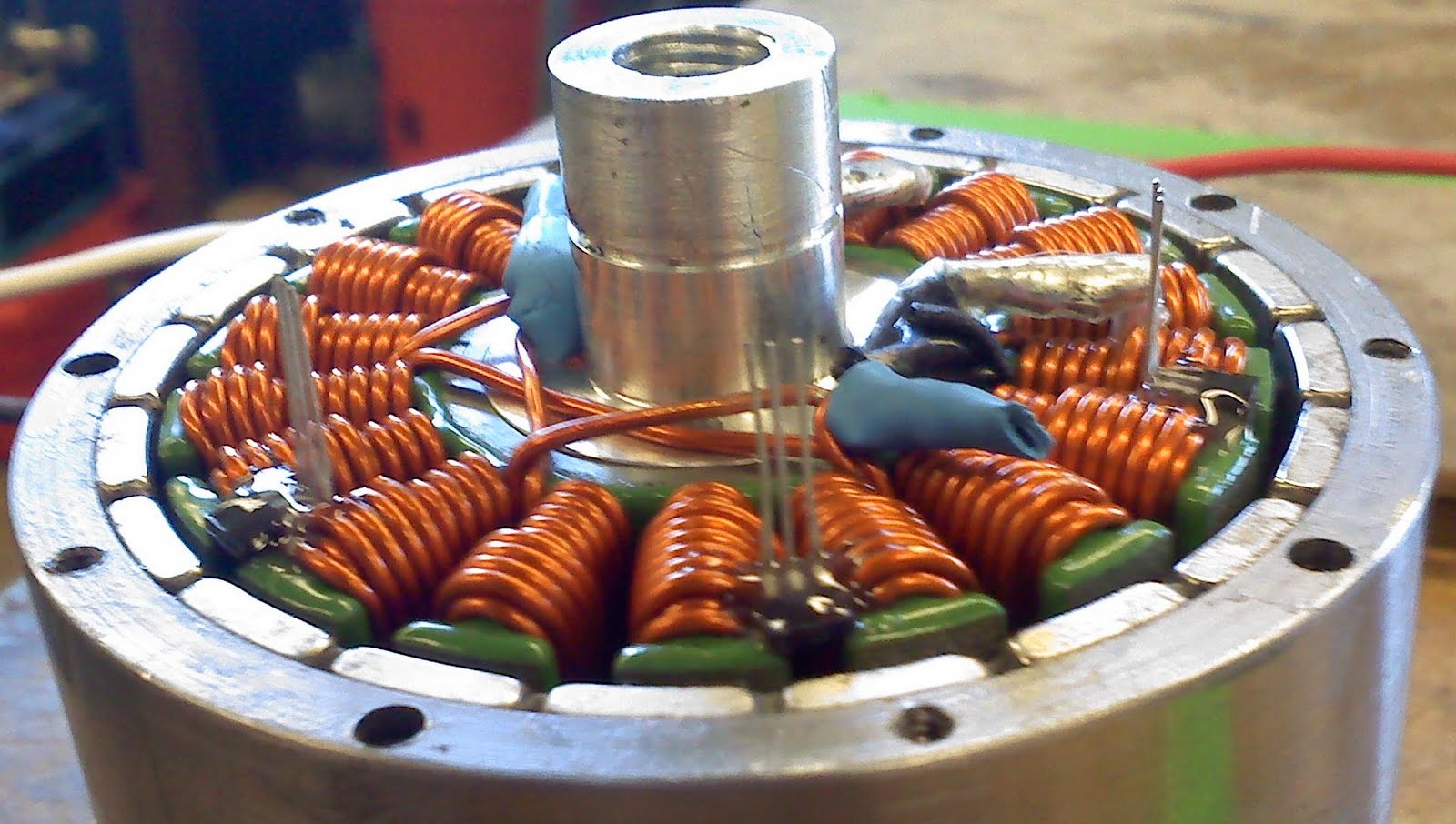Hall
Sensors
Hall sensor provides the information to synchronize
stator armature excitation with rotor position. Since the commutation of BLDC
motor is controlled electronically, the stator windings should be energized in
sequence in order to rotate the motor. Before energizing a particular stator
winding, acknowledgment of rotor position is necessary. So the Hall Effect
sensor embedded in stator senses the rotor position.
Most BLDC motors incorporate three Hall sensors which are
embedded into the stator. Each sensor generates Low and High signals whenever
the rotor poles pass near to it. The exact commutation sequence to the stator
winding can be determined based on the combination of these three sensor’s
response.
Working
Principle and Operation of BLDC Motor
BLDC motor works on the principle similar to that of a conventional DC motor, i.e., the Lorentz force law which states that whenever a current carrying conductor placed in a magnetic field it experiences a force. As a consequence of reaction force, the magnet will experience an equal and opposite force. In case BLDC motor, the current carrying conductor is stationary while the permanent magnet moves.

When
the stator coils are electrically switched by a supply source, it becomes
electromagnet and starts producing the uniform field in the air gap. Though the
source of supply is DC, switching makes to generate an AC voltage waveform with
trapezoidal shape. Due to the force of interaction between electromagnet stator
and permanent magnet rotor, the rotor continues to rotate.
Consider
the figure below in which motor stator is excited based on different switching
states. With the switching of windings as High and Low signals, corresponding
winding energized as North and South poles. The permanent magnet rotor with
North and South poles align with stator poles causing motor to rotate.
Observe that motor produces torque because of the development of attraction forces (when North-South or South-North alignment) and repulsion forces (when North-North or South-South alignment). By this way motor moves in a clockwise direction.
Here,
one might get a question that how we know which stator coil should be energized
and when to do. This is because; the motor continuous rotation depends on the
switching sequence around the coils. As discussed above that Hall sensors give
shaft position feedback to the electronic controller unit.
Based
on this signal from sensor, the controller decides particular coils to
energize. Hall-effect sensors generate Low and High level signals whenever
rotor poles pass near to it. These signals determine the position of the shaft.
Related Articles
Lesson meta keywords and meta description:
Write a public review